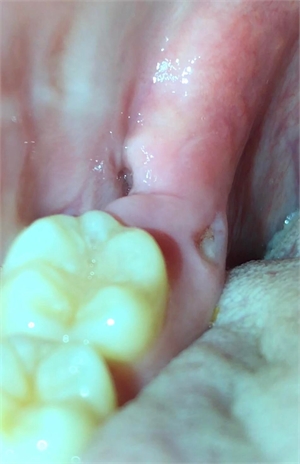How To Fill Crater In Tooth? Repair Guide

The dreaded crater in the tooth - a common issue that can be both painful and unsightly. If you’re dealing with a crater-like cavity or hole in your tooth, it’s essential to address it promptly to prevent further damage and potential infections. In this comprehensive guide, we’ll walk you through the steps to fill a crater in a tooth, including the different types of fillings, preparation, and aftercare.
Understanding the Crater Before we dive into the filling process, it’s crucial to understand what causes these craters. A crater in a tooth is typically a result of tooth decay, which can be caused by poor oral hygiene, sugary diets, or acid erosion. When bacteria in the mouth break down food particles, they produce acid, which can damage the tooth enamel and create a hole or cavity. If left untreated, this cavity can progress and become a crater-like structure, affecting the tooth’s structure and potentially leading to more severe issues like abscesses or tooth loss.
Types of Fillings There are several types of fillings that can be used to repair a crater in a tooth, depending on the size, location, and extent of the damage. The most common types of fillings include:
- Amalgam Fillings: Made from a mixture of mercury, silver, and other metals, amalgam fillings are durable and long-lasting. However, they can be noticeable, as they have a metallic color.
- Composite Resin Fillings: These fillings are made from a tooth-colored material that can be molded to match the surrounding tooth structure. They’re a popular choice for visible teeth and are more aesthetically pleasing than amalgam fillings.
- Gold Fillings: Also known as inlays or onlays, gold fillings are made from gold alloy and are highly durable. They’re often used for larger cavities or for teeth that are subject to heavy chewing forces.
- Ceramic Fillings: These fillings are made from porcelain or ceramic materials and are highly resistant to staining and wear.
Preparation and Filling Process To fill a crater in a tooth, your dentist will typically follow these steps:
- Anesthesia: To ensure your comfort during the procedure, your dentist may administer local anesthesia to numb the area around the tooth.
- Removing Decay: Your dentist will use a drill or other specialized tools to remove any decayed tooth material from the crater.
- Cleaning and Shaping: The area will be cleaned and shaped to prepare it for the filling material.
- Filling Material Application: The chosen filling material will be applied to the tooth, and your dentist will shape and mold it to match the surrounding tooth structure.
- Curing and Polishing: Depending on the type of filling, your dentist may use a special light to cure the material or allow it to harden. The filling will then be polished to create a smooth surface.
Aftercare and Maintenance After the filling procedure, it’s essential to follow these aftercare and maintenance tips to ensure the longevity of the filling and the overall health of your tooth:
- Avoid Chewing: For the first few hours after the procedure, avoid chewing or biting on the filled tooth.
- Soft Food Diet: Stick to a soft food diet for the first 24 hours to avoid putting excessive pressure on the tooth.
- Good Oral Hygiene: Maintain good oral hygiene practices, including brushing and flossing, to prevent further decay or damage.
- Regular Check-Ups: Schedule regular dental check-ups to monitor the filling and ensure it’s not deteriorating or causing any issues.
FAQ Section
What are the symptoms of a crater in a tooth?
+Symptoms of a crater in a tooth can include tooth sensitivity, pain when eating or drinking, and visible holes or cavities. If you're experiencing any of these symptoms, it's essential to consult with your dentist to determine the best course of treatment.
Can I fill a crater in a tooth at home?
+No, it's not recommended to fill a crater in a tooth at home. While there are over-the-counter dental filling kits available, they're not a substitute for professional dental care. Filling a crater in a tooth requires specialized training, equipment, and expertise to ensure the filling is done correctly and safely.
How long does a filling last?
+The lifespan of a filling depends on several factors, including the type of filling material, oral hygiene practices, and chewing habits. On average, a filling can last anywhere from 5 to 20 years. Regular dental check-ups and good oral hygiene practices can help extend the life of the filling.
Conclusion Filling a crater in a tooth is a common dental procedure that can help restore the tooth’s structure and prevent further damage. By understanding the different types of fillings, preparation, and aftercare, you can make informed decisions about your oral health. Remember to consult with your dentist to determine the best course of treatment for your specific situation. With proper care and maintenance, a filled tooth can last for many years, and you can enjoy a healthy, happy smile.

